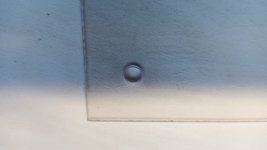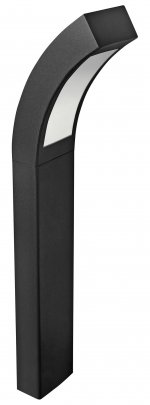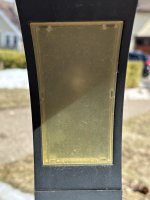You are using an out of date browser. It may not display this or other websites correctly.
You should upgrade or use an alternative browser.
You should upgrade or use an alternative browser.
Drilling Acrylic - special bit set
- Thread starter Cheese
- Start date
Michael Kellough
Member
rst said:The plastic welding section is very interesting, I bought a used American made one similar to the mini-e model and requires compressed air. I've used it for ABS fabbing.
Is this similar to the process the Metabo edge banner uses to get a seemless joint without using adhesive?
Michael Kellough
Member
Thanks!
Cheese
Member
rvieceli said:I was thinking that the case was a custom one for Norseman
Ya Ron I think you're right...and thanks for those other product leads, this stuff gets complicated when you're trying to purchase drill bits in quantities of 1 rather than 10...
As a fellow metal-worker, I thought you may be interested in this.
A couple of Norseman items that I keep in the attic cover of the SYS-CE Installer Systainer. A Norseman step drill for sheet metal and thin sheet goods and a Norseman countersink for extremely small holes.
Both of these items are usually catalogued in the "when will I ever need these items" only to be an absolutely necessity when they are needed...you get it. [smile]
[attachimg=1]
[attachimg=2]
[attachimg=3]
Attachments
hdv
Member
I have had drill bits that are made especially for drilling plastics for a long time, but not for acrylic. I have a project coming up where I will be doing just that. So, thanks to this thread, I realised it might be better to get some for good results.
Today I received a set I ordered in Germany and tested the 6 mm bit on a piece of 2 mm acrylic scrap I had laying around. The result is quite good, if I say so myself. Crisp edges, no breaking, and no overheating.
These bits are made by Star-M and to me worth every penny. I am glad I got that set.
P.S. My apologies for the low quality photos. I had to use my phone and the camera on that sadly is rather mediocre.
[attachimg=1]
[attachimg=2]
Today I received a set I ordered in Germany and tested the 6 mm bit on a piece of 2 mm acrylic scrap I had laying around. The result is quite good, if I say so myself. Crisp edges, no breaking, and no overheating.
These bits are made by Star-M and to me worth every penny. I am glad I got that set.
P.S. My apologies for the low quality photos. I had to use my phone and the camera on that sadly is rather mediocre.
[attachimg=1]
[attachimg=2]
Attachments
Packard
Member
When I have drilled acrylic sheet (1/4” thick), I used conventional twist bits, but started the hole with a much smaller pilot hole. The pilot hole had to be just large enough to engage the taper.
I was drilling 3/8” diameter holes. I probably used 1/8” diameter as a pilot. It worked fine. I only had 4 holes to drill, so I was not going to invest heavily in specialized drill bits.
I was drilling 3/8” diameter holes. I probably used 1/8” diameter as a pilot. It worked fine. I only had 4 holes to drill, so I was not going to invest heavily in specialized drill bits.
Crazyraceguy
Member
- Joined
- Oct 16, 2015
- Messages
- 5,164
Packard said:When I have drilled acrylic sheet (1/4” thick), I used conventional twist bits, but started the hole with a much smaller pilot hole. The pilot hole had to be just large enough to engage the taper.
I was drilling 3/8” diameter holes. I probably used 1/8” diameter as a pilot. It worked fine. I only had 4 holes to drill, so I was not going to invest heavily in specialized drill bits.
I have always had problems with that. The twist bits are so aggressive that they tend to pull into the cut and then "cork-screw" as they go through. If the piece is not held down well enough, it will flex (maybe crack) and the holes come out ragged. If it is held well, the over-driving pulls up around the hole, fracturing it.
The custom of flattening the cutting edges, to produce a scraping effect, mitigates this.
hdv
Member
Like I wrote: I have drill bits for plastics. However, these are not that great for acrylic. They are OK, but not great. I admit, if you do everything very carefully, you will get acceptable holes with them. But it is too much of a hassle. At least it is to me.
The hole shown in the photo was done freehand in one go without clamping, without considering rotation speed or feed speed of the drill bit, nor being careful about anything else. I just drilled the hole and that was it. The only thing I took care of was wearing safety glasses, because I wasn't sure there would be no chipping.
The hole shown in the photo was done freehand in one go without clamping, without considering rotation speed or feed speed of the drill bit, nor being careful about anything else. I just drilled the hole and that was it. The only thing I took care of was wearing safety glasses, because I wasn't sure there would be no chipping.
Try using Lexan next time you have a project requiring plastic. I just made a router table dust collection box for my Jess-em lift, similar to the one at SauterShop. Lexan (polycarbonate) cuts beautifully with your woodworking tools. I cut it with my bandsaw, 3/8", 6-tpi blade and drilled it with no problem using standard metal cutting, high-speed jobber drills as well as forstner bits. And it's tougher than acrylic. Only downside is it's just a little more expensive but worth the extra cost not to have the hassle of needing different tools to work it. You can find about any size you need on Amazon.
hdv
Member
I know, but as far as I know polycarbonate is not resistant to UV, whereas acrylic is. I know you can get polycarbonate with a UV filtering coating, but I don't have that here right now. Beside I don't want a coating that can get loose. Another thing is that you can shape acrylic very well when heating it. I don't know if you can do that with polycarbonate.
"Which UV Resistant Plastics Won’t Degrade in the Sunlight"?
https://protoplastics.com/uv-resistant-plastics/
https://protoplastics.com/uv-resistant-plastics/
hdv
Member
Well, what do you know? I always thought that polycarbonate was less resistant to UV. Learned something new today. Thanks!
Almost all modern plastics are UV resistant, The days of yellowing and crazing plastics are pretty much over. As a retailer and fabricator for 44 years plastics have become very advanced. One consideration about polycarbonates, (Lexan was the first) and acrylics (Plexiglass), is that while poly is tuffer and can be bend in a press, acrylics must be heated to bend. Polys surface scratch easier than acrylics, and acrylics are slicker.
Crazyraceguy
Member
- Joined
- Oct 16, 2015
- Messages
- 5,164
[member=25351]rst[/member] Have you ever messed with a product called 3Form? It's a plastic sheet goods material that usually has something suspended between the outer layers, though it is possible to get it without.
It's pretty soft as far as drilling, but where I notice it the most is sanding the edges. You are supposed to be able to flame polish them, but I find that the "stuff" trapped inside doesn't like it so well.
It's pretty soft as far as drilling, but where I notice it the most is sanding the edges. You are supposed to be able to flame polish them, but I find that the "stuff" trapped inside doesn't like it so well.
Cheese
Member
hdv said:I know, but as far as I know polycarbonate is not resistant to UV, whereas acrylic is.
Well actually the UV resistance differs between the various acrylic manufacturers. I have some garden lighting in the front of the house and I'd bet a couple of beers [smile] that the lenses are made from acrylic. First off acrylic is cheaper and it's more scratch resistant than polycarbonate, both necessary qualities for mass produced garden lights that are built to a price level and not necessarily to a quality level.
Here are 3 photos, the 1st one is what the product looks like, the 2nd one is a light that was installed in 2019, the 3rd one is a light that was installed in 2014. The 2019 light lens looks pretty good but it is already getting cloudy and starting to slightly yellow after about 3+ years. You can draw your own conclusions about acrylic. [big grin]
[attachimg=1]
[attachimg=2]
[attachimg=3]
I do know that PLEXIGLAS® guarantees their acrylic for 30 years...others not so much.
[attachimg=4]
Attachments
hdv
Member
All in all the lines between acrylic and polycarbonate have become quite blurred, I dare say.
Anyway, I already have ordered the acrylic and really do like the drills I got for it. So, no regrets here. Especially not for the price I paid. It certainly wasn't Fisch or Famag territory... [cool]
Anyway, I already have ordered the acrylic and really do like the drills I got for it. So, no regrets here. Especially not for the price I paid. It certainly wasn't Fisch or Famag territory... [cool]
Similar threads
- Replies
- 18
- Views
- 14K









